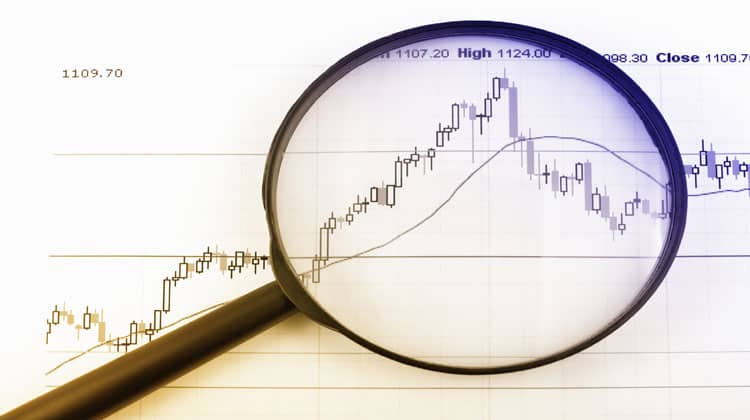THIS POST MAY CONTAIN AFFILIATE LINKS. PLEASE SEE MY DISCLOSURES. FOR MORE INFORMATION.
In the stock market, there are always ups and downs.
Sometimes these fluctuations are so small that they don’t even register on most people’s radar.
Other times, the market experiences a correction, a sudden and significant drop in prices.
If you’re able to see a stock market correction before it happens, you can make some serious profits.
In this post, I’ll teach you how to identify a stock market correction coming and how to take advantage of it.
Table of Contents
How To Identify A Stock Market Correction
Understanding A Stock Market Correction

Before I share with you the tips to profiting from a drop in the stock market, you need to first understand the types of pullbacks the market experiences.
In investing terms, a drop of up to 10% is simply known as a pullback.
If the market drops between 10% and 20%, this is a correction.
A drop of more than 20% is considered a bear market.
And if the market drops 10% in a single day, this is known as a stock market crash.
- Read now: Here is how to survive a stock market crash
- Read now: Here is how to survive a stock market correction
Factors That Can Predict A Stock Market Correction
Now that we know what a correction is, it is time to look at the factors that can help you spot on before it happens.
Understand that no one can predict when a stock market correction will occur.
Even using the tools below, you still won’t be 100% right.
But they can give you insight of when you might want to make moves so you can profit from them.
#1. Weak Corporate Earnings
When a corporation surprises investors with weak quarterly earnings or lowered guidance for future earnings, this can be an ominous sign.
Most times, the tone is set by the larger banks that report earnings first.
If they miss on their earnings estimates, or talk about weakness going forward, you need to pay attention.
This is because many investors will relate one corporation earnings with another.
For example, if JP Morgan misses estimates badly, investors will think all the other bank stocks will miss too.
This could lead to a selloff of financial stocks, triggering entire market downturns.
#2. Inverted Yield Curve
This one is a little more technical analysis, but is important to understand.
The yield curve is the movement of short term and long term treasury bonds.
Traditionally, longer term bonds carry a higher yield because of the fact you are locking your money up for a longer period of time and because the future is unknown.
On the flipside, short term bonds have a lower yield since your money isn’t locked up for a long period and you can more accurately assess the short term.
When a chart of these yields inverts, or short term yields are higher than long term yields, this is a classic sign a correction is coming.
#3. Irrational Exuberance
This phrase was made popular by Alan Greenspan, the former Chairman of the Federal Reserve.
It is used to describe a time when investors are so bullish on assets that the asset prices become divorced from their underlying value.
You can usually identify irrational exuberance in stocks when they hit new high prices day after day, or when everyone you talk to is telling you about the hot stock they just invested in.
When you notice the person cutting your hair or the person waiting on you at the restaurant is talking about investing and their investment strategy, there is a good chance the market is overvalued and needs to pullback.
#4. Weak Economic Indicators
Macroeconomic data is data that reflects the health of the economy as a whole.
Some examples include jobless claims, investor sentiment, retail sales, and GDP growth.
If this data comes out weaker than expected, it could be a sign that the economy is slowing down.
As a result, financial markets might start trading sideways or even see an uptick in market volatility.
Understand some economic data are forward looking and some are past predictors.
What this means is some data is telling individual investors that a stock market decline is coming and other data won’t be bad until after the market crashes.
Related to this point is monetary policy.
If there is talk of inflation fears, this could spook the market and change overall market trends.
#5. Supply And Demand Issues
This is related to the point above about economic data.
If there is a large build up of supply but not an increase in demand, the market could be headed for a drop.
This is because prices have to come down to meet demand.
Lower prices and possibly fewer sales means companies might miss estimates or need to lower estimates going forward.
How To Profit From A Stock Market Correction

We know what a correction is and some of the tools to use to potentially spot one coming.
What are the key steps an investor needs to take in order to profit from the market drop?
Here are the things you can consider doing.
#1. Build An Opportunity Fund
The best thing you can do is to put money aside on a regular basis for the sole purpose of investing.
But you don’t invest this money until the market drops.
For example, you build up a savings account over time and when you notice everyone is talking about investing, you know a pullback could be coming.
When it happens, you take the money you saved and invest it, buying stocks at a lower price.
Over time, the stocks will earn back what they lost and grow more, helping you to grow your wealth in the process.
#2. Dollar Cost Average
As great as the plan above is, there is a downside.
You never know when the best time to invest is.
Is it the day after a large selloff? Do you wait a couple of day? A week?
Since no one knows, the best way to invest is to take advantage of dollar cost averaging.
This has you buy stocks on a regular basis, say every week or every month.
For example, let’s say you have $5,000 to invest.
You could invest $1,000 each month for 5 months.
Or you could invest $500 a week for 10 weeks.
You decide what is best for you and your financial goals.
- Read now: See how to invest $250 a month
#3. Sell Bond Holdings
If you think a correction is coming and want to have more cash available to invest, you can consider selling some of your bond holdings.
When there is a sharp drop in stocks, typically the bond market goes up.
So you can sell some bonds and put that money to work in lower priced equities once prices start to drop.
#4. Change Your Asset Allocation
Another good idea is to change your asset allocation as well.
This is another form of the above idea.
For example, let’s say your 401k allocation is 60% equities and 40% fixed income.
Thinking a financial crisis is on the horizon and wanting to but more when prices drop, you could change your allocation to 80% equities and 20% fixed income.
Now more of your future contributions will be invested in stocks.
As prices begin to go higher, you can change your allocation back so that more of your money goes in fixed income and less goes towards higher priced equities.
#5. Review Your Risk Tolerance
Most times when we are planning to invest and determine our risk tolerance, the U.S. stock market is not in one of the sustained periods of decline.
As a result, we have a hard time understanding the market risks to our money.
If you think the market is headed for correction territory, it is a smart thing to review your ability to handle risk.
Look at your portfolio value and then do the math to see the impact of a 10% loss or even a 20% loss.
Then ask yourself if you are comfortable with this.
For example, let’s say you have $100,000 invested.
Are you comfortable losing $10,000? How about $20,000?
If the answer is no, then it makes sense to further diversify your portfolio so that the risk you are taking on matches a level you feel safe with.
#6. Invest In Quality Stocks
If you have a strong appetite for risk and want to ride out the swings of the market, then you should make sure you invest in quality stocks.
These are strong, stable companies that have weathered past market declines with minimal damage.
Final Thoughts
There is how to identify a stock market correction coming and profit from it.
I can’t stress enough that no one can predict a market drop all the time.
You might be right here and there, but the odds are against you always being right.
Also, even if you use the tools mentioned above, it doesn’t mean a pullback is going to happen tomorrow.
Many times these tools are months ahead of when a correction may occur.
And even there, there are things that can happen in the economy and market that has the tools predict wrong.
At the end of the day, your best option is to be a long term investor and build up an opportunity fund so when the market drops, you can jump in and buy stocks on sale.
- Read now: Click here for the investing terms you need to know
- Read now: Here are the best types of short term investments to consider
- Read now: Learn Jack Bogles investing rules
I have over 15 years experience in the financial services industry and 20 years investing in the stock market. I have both my undergrad and graduate degrees in Finance, and am FINRA Series 65 licensed and have a Certificate in Financial Planning.
Visit my About Me page to learn more about me and why I am your trusted personal finance expert.
